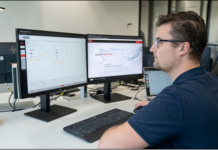Efficiency depends on smooth, swift operations. When units malfunction, everything slows down. Even a tiny fault, like a misaligned belt or a loose sensor, can halt production. One overlooked warning and workers might face a hazardous situation. Inactive machinery also eats into production time and, eventually, profit margins.
Since industrial plant activities rely heavily on uptime and reliability, they require speedy and precise response when systems stall. How companies react often determines how quickly they can recover and maintain a competitive edge.
Common Causes for Machinery Breakdowns
Most malfunctions can be traced back to a few recurring issues. Addressing these can help prevent future shutdowns.
- Lack of maintenance: Skipping scheduled inspections or delaying minor repairs allows small issues to snowball into major breakdowns. Components wear out unnoticed, calibration drifts and systems lose efficiency over time. All of these issues increase the risk of sudden failure.
- Poor lubrication: Inadequate or improper lubrication results in increased friction, excessive heat buildup and premature wear of moving parts, including bearings, gears and shafts. Consistent lubrication schedules and using the right grade of oil or grease are essential to prevent mechanical seizure.
- Electrical surges: Voltage spikes caused by unstable power supply, lightning or faulty wiring can damage sensitive control boards, sensors and circuits. Installing surge protectors and grounding systems reduces the risk of costly electronic failures.
- Contamination: Dust, dirt and moisture can infiltrate equipment housings, clog filters and corrode metal components. In cleanrooms or precision environments, even minimal contamination can disrupt alignment and accuracy, leading to degraded performance or a complete system shutdown.
- Overheating: Blocked vents, malfunctioning cooling fans or excessive workloads cause machines to operate beyond safe temperature limits. Persistent overheating weakens insulation, deforms parts and reduces the lifespan of electronics, often culminating in total failure.
- Human error: Workflow mistakes, incorrect settings or improper assembly are among the leading causes of mechanical and electrical damage. Regular operator training, clear stand operating procedures and checklists help minimize these preventable malfunctions.
Environmental factors can also degrade sensitive electronics. A dusty filter can bring an entire conveyor belt to a standstill. Recognizing these triggers helps maintenance teams design more effective preventive measures and reduce the frequency of unplanned downtime.
Prepare for Equipment Malfunction Before It Starts
Establishing an equipment failure response plan before breakdowns occur ensures that employees understand their roles and the proper procedures to follow. This plan should outline communication protocols, spare-part sourcing priorities, the escalation path and approval workflows.
Workers should also be aware of the warning signs before total failure. Equipment rarely crashes without signals. Look out for subtle shifts like these, which often precede a complete shutdown:
- Temperature spikes
- Unusual vibrations
- Irregular power consumption
- Abnormal noise
Identifying and addressing these early indicators helps prevent minor mechanical issues from becoming major disruptions.
Regular training sessions and simulated breakdown drills reinforce employees’ ability to act under pressure. These exercises build familiarity with isolation procedures, reporting protocols and the use of diagnostic tools. When everyone, including operators and supervisors, understands their specific role, responses become instinctive rather than reactive, reducing confusion and downtime during real incidents.
Immediate Actions to Contain and Correct Failures
The first few moments after a machine falters determine whether the equipment can recover or if the disruption will cascade through production. A quick and organized response can contain the damage and shorten the recovery time.
1. Prioritize Safety
The first step is to shut down the affected equipment and isolate the area to prevent hazards. Operators should immediately alert supervisors and follow the established emergency sequence. Proper safety discipline avoids secondary damage and keeps personnel protected.
2. Conduct a Structured Root Cause Analysis
Once the situation is stable, identify the source of the failure. A structured Root Cause Analysis helps uncover the technical and working actors behind the breakdown. Gather all relevant data, including maintenance logs, operator notes, load records and sensor readings, to trace where the malfunction began and why it occurred.
3. Evaluate Repair and Replacement Options
A defective drive, motor or control board can be frustrating as it keeps production offline. It takes even longer if parts are difficult to find in physical stores or online. Partnering with multiple suppliers or trusted repair providers helps maintain access to critical or discontinued components and reduces unplanned downtime.
Global Electronic Services is one of the best options for surplus industrial electronics in the U.S. The company repairs, sells and services a wide range of industrial electronics, supported by an extensive inventory of new, refurbished and used equipment.
Even for niche or legacy brands, you can trust that it can locate the right components. Its global network taps over 60,000 manufacturers and distributors worldwide.
4. Validate and Document Performance
Even after repairs, you need to double-check performance. Validation tests confirm whether the machine operates within its required specifications. Conduct static checks for voltage, insulation resistance and mechanical alignment, followed by dynamic testing under simulated production conditions. Document all results for compliance and future reference.
Post-Failure Recovery and Reliability Improvement
Managing failure means fixing the immediate issue while also reducing future risk. Repeated disruptions often follow an initial breakdown, especially if the root issues remain unaddressed.
Implement Predictive Maintenance Practices
Predictive maintenance relies on real-time data and analytics to anticipate component wear. This alters condition monitoring from a routine checklist into a targeted, data-driven process. By acting before another failure occurs, facilities reduce costly equipment interruptions by 30%, significantly extending their life.
Review and Refine After Every Incident
Every breakdown offers insight for improvement. Review each breakdown. Ask yourself if the team responded fast enough. Was the diagnosis accurate? Did repairs hold up? Using Pareto analysis in maintenance indicates that about 80% of breakdowns stem from about 20% of root causes.
Assess vendor performance and spare-part availability as part of the analysis. The findings should feed into a continuous improvement process that strengthens reliability strategies and streamlines future responses.
Strengthen Long-Term Reliability Planning
Reliability planning integrates technical performance with financial foresight. Begin by reviewing asset criticality to determine which machines pose the highest production risk, then align budgets and maintenance priorities accordingly. Build redundancy for essential systems and evaluate life cycle costs annually to decide when replacement is more practical than repair.
Resilience Is Your Real Competitive Edge
Breakdowns will always test a facility’s preparedness, but they do not have to dictate outcomes. When you anchor your strategy in early detection, structured analysis, efficient sourcing and predictive planning, you keep production reliable and costs controlled. When a component becomes defective, partnering with trusted providers for surplus and repair support ensures that industrial operations get back on track quickly, with verified components and dependable turnaround times. Combined with strong internal processes, that partnership transforms equipment failure from a costly setback into a managed, recoverable event.

















